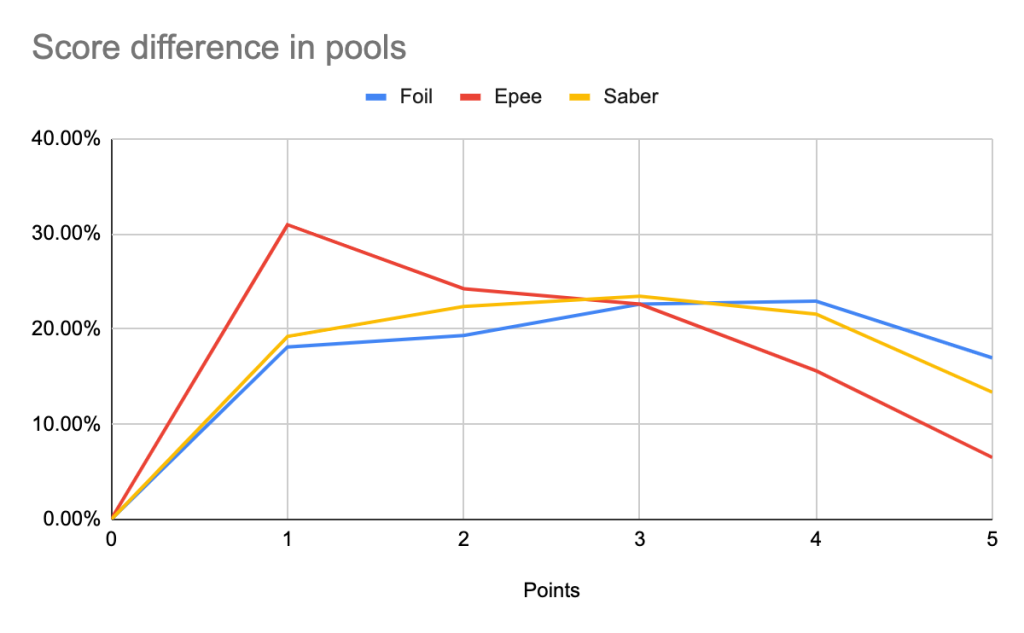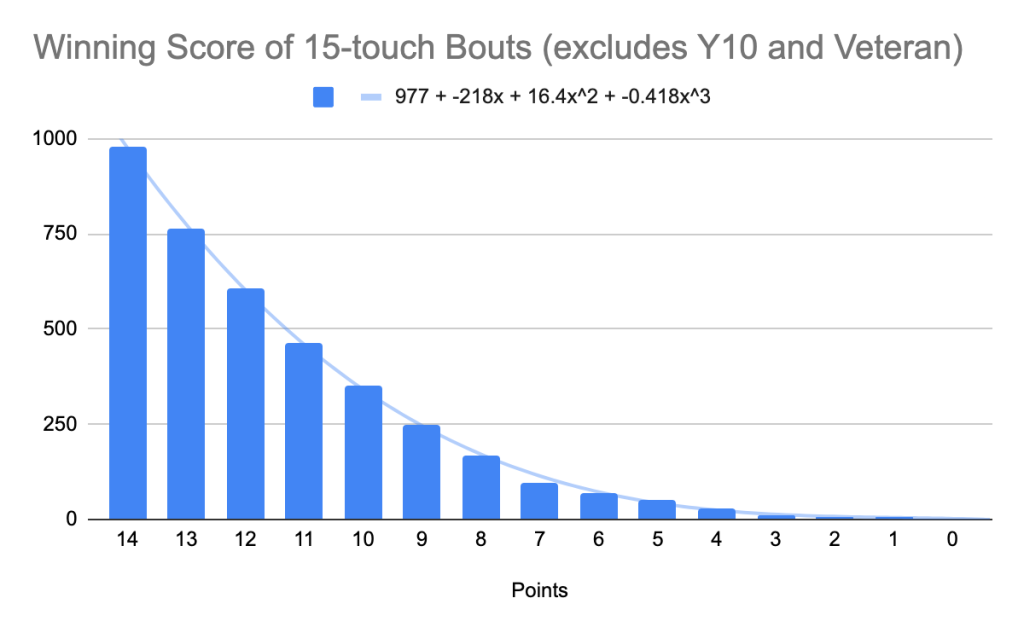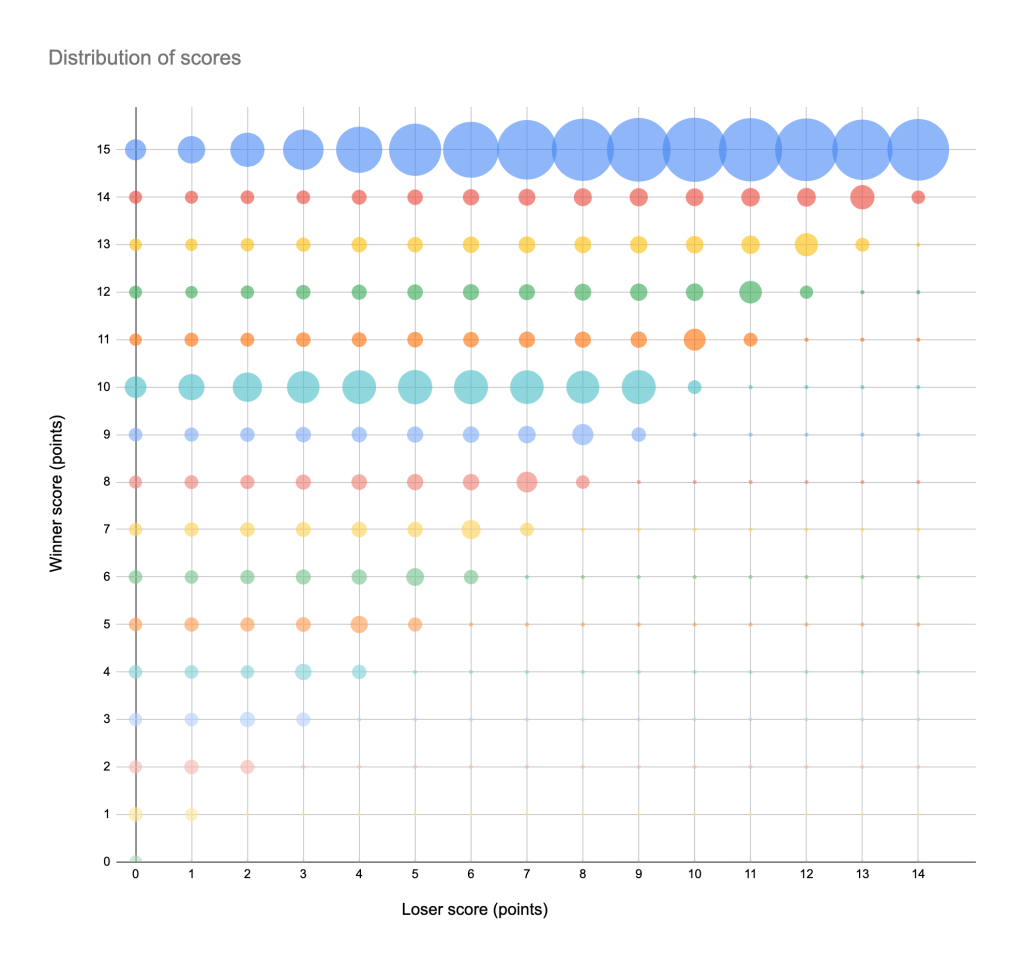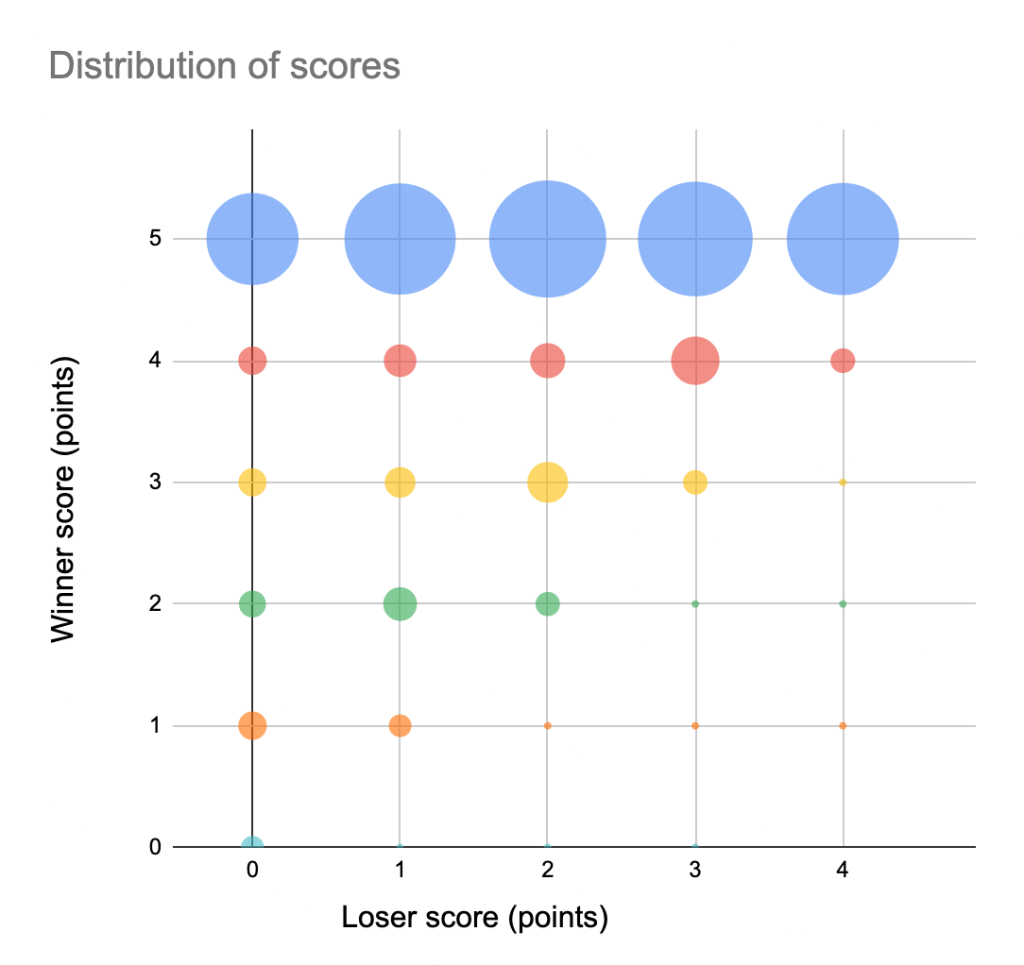You are standing on the unforgiving piste, the weight of your weapon in hand. Your breath quickens, heart pounding, as you face your opponent. The score is tied, 14-14. Every move feels like a dance on the edge of victory and defeat. Each step, each parry, a desperate bid for that final touch. The crowd’s hushed anticipation hangs heavy in the air. Every fiber of your being strains towards that elusive point, but fate has other plans. The final touch lands, not in your favor. The world seems to slow as the referee’s arm rises, sealing your fate. A symphony of cheers and sighs echoes around you, drowning out the thunderous beat of your own heart. It’s over. You’ve come so close, yet fallen short.
Score differences in DEs
Losing by one touch has happened to all of us at least once, and it’s often the most painful thing possible in fencing, sometimes even more painful than injuries and cramps, despite it being 100% mental. Sometimes it feels like this “bad luck” happens more often than it should, and you are correct to think that, because it does!

This distribution highlights that losing by just one touch (in most cases, a score of 15-14) is indeed the most common outcome, with 11.6% of bouts ending this way. Additionally, score differences of 5 or less collectively make up a significant portion (more than 50%) of the outcomes, underlining the fine margins and competitiveness often seen in DE bouts.
In fencing, each weapon has its unique characteristics, and the statistics reflect these distinctions. When it comes to score differences, epee stands out with the highest likelihood of ending with a one-point difference, approximately 15%, compared to other weapons, which are around 10%.

In terms of score distribution, the curve for epee tends to skew more to the right compared to saber. Similarly, saber exhibits a right skew when compared to foil. This suggests that epee has the closest bouts, followed by saber, then foil.
Score differences in pools
Although it is not as pronounced, a one-touch score difference is also the most common outcome in pools. Pools are intentionally designed to encompass a broad range of fencers, from the most skilled competitors to those still developing their abilities. This diversity in skill levels often leads to a wider spread of scores, including more wins by a large margin.
In Division 1, reserved for fencers ranked C and higher, the level of competition is notably higher, resulting in closer bouts. This is reflected in the data on score differences:

The lower percentages for score differences of 4 and 5 indicate the rarity of overwhelming victories. Instead, the majority of bouts are decided by only a one or two touches. This is a testament to the high skill level and competitiveness of the fencers in Division 1.
The weapon specific trends found in DEs are still the case in pool bouts, and epee features even closer bouts compared to foil and saber, with almost a third being decided by one touch.

It takes time to figure out your opponent in epee, so probably the score remains tight until the stronger fencer can figure out their opponent’s weakness, resulting in a smaller overall score difference.
Distribution of winning score
As you would expect, the majority (~95%) of 15-touch bouts reach 15. Specifically, 100% of saber bouts reach 15, 95% of foil bouts reach 15 and 90% of epee bouts reach 15.
Interestingly, removing those bouts, the winning score of bouts that run out of time follows a trend modeled almost perfectly by a cubic function.

Distribution of scores
This is the distribution of the scores in 15 touch bouts, with larger circles representing outcomes that are more frequent.

Here is the same graph but for 5 touch bouts

You can check out the full data here!
